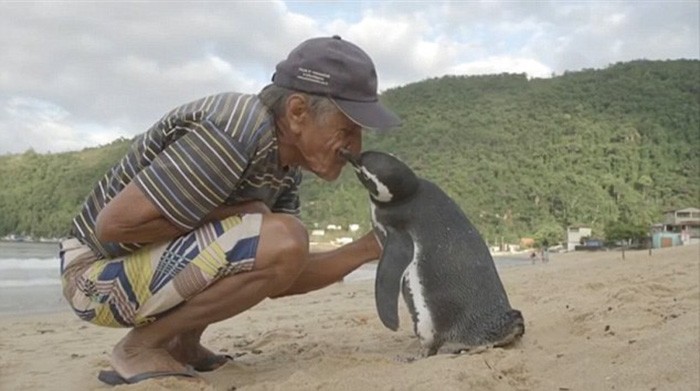If you asked someone about the tallest mountain in the world, or even the most famous, the first answer on most people’s lips would undoubtedly be Everest.
Mt. Everest is beautifully dangerous, and summiting is an incredible feat. In recent years it’s garnered a reputation of being tame or even an upscale tourist attraction.


But where Everest might seem conquered, there is another terrifying mountain that might never be truly tamed. K2, the world’s second highest mountain and the deadliest of the world’s five tallest peaks.
So, is K2 the world’s deadliest mountain? And if so, what makes it so different from the other dangerous mountains of the world?
In this article, we’ll delve into what makes K2 so treacherous and why even the best climbers on the planet fear this staggering peak.
K2: What Makes it the “Savage Mountain”?
Before we dive into what makes K2 so infamous, let’s learn the basics about the mountain and why it’s considered so savage.
K2:
● Elevation: 8,611 m (28,251 ft), second highest in the world.
● Location: On the border of Pakistan and China in the Karakoram Range.
● First summited: 1954 by Lino Lacedelli and Achille Compagnoni.
● Deaths: 96 deaths as of July 2024
There are several factors that make K2 as dangerous as it is, a few of which include:
● A fatality rate of 20%, compared to Everest’s 4%.
● Technicality–K2 requires climbers to possess a deep understanding of technical climbing in order to summit. There are steep rock faces, glaciers, ice walls, and deadly crevasses.
● Unpredictable weather and climbing windows–Because of its location, the weather on K2 is difficult to predict, and therefore the available climbing windows are short. Climbers can get caught in storms or be forced to abandon a summit attempt when a climbing window closes.
● Few fixed ropes or infrastructure- Unlike Everest and other more popular mountains, K2 lacks extensive fixed ropes and other infrastructure like ladders. This means climbers have to bring all their own gear and set it up themselves, which costs valuable time.
● Remote location- While none of the world’s five tallest peaks are easy to access, K2 is particularly difficult to travel to. It’s located in the remote Karakoram Range of mountains, sitting on the border between Pakistan and China. Only the North Ridge of the mountain on the Chinese side is readily climbable–75% of expeditions use this route.
● The Black Pyramid- One of the hardest and most technical portions of climbing in the world is located right on the slopes of K2, called the Black Pyramid. This section consists of 2,000 feet of rock climbing in harsh winds. While there are some fixed ropes and ladders, not all of them are reliable.
The History Of K2
Unlike some famous mountains whose local names were originally ignored–like how Denali was known as Mount McKinley for a time–the surveyors that first recorded K2 wanted their discoveries to keep their local names.
Unfortunately, K2 had never been given a local name, which is why it remains simply “K2” to this day.
K2 was originally noted during the Great Trigonometrical Survey, which was an attempt to survey the entirety of the Indian subcontinent that began in 1802 and ended in 1871.
It was recorded during their survey of the Karakoram Mountains in 1856. This was also the first record of the mountain range in history.
Surveyors made note of the tallest peaks in the range, calling them K1, K2, K3, K4, and K5 respectively. These labels were meant as placeholders until the local names for the mountains could be found.

Eventually, all of the mountains came to be known by their true names–K1 was known by the locals as Masherbrum, for example–but K2 was different.
Being so remote, K2 wasn’t able to be seen by any of the local villages or populations. Therefore, unlike Masherbrum, the people of the area had never given K2 a moniker.
Despite efforts to give K2 its own unique name, the shorthand label it had been given in 1856 stuck. The mountain would remain K2 forever.
The First Ascents
A few very early attempts were made to climb K2 shortly after its discovery, but most were turned back quickly because of the intense difficulty and brutal weather.
In 1909, the first true expedition to K2 was planned by expert mountaineer Oscar Eckenstein and none other than occultist Aleister Crowley himself.
This expedition ultimately failed, but the group made it an impressive 6,525 meters and remained on the Savage Mountain for nearly 70 days.
Later, in 1909, another attempt would be made–this time by Prince Luigi Amedeo, Duke of the Abruzzi and his team. This attempt also failed, but the prince would have a part of the mountain named after him: the Abruzzi Spur.
The Americans were the next to attempt K2 in 1938 and 1939, coming as close and 660 ft of the summit before ultimately being turned back.
The last major failed expedition would be by another American team in 1953. This expedition would end in tragedy when climber Art Gilkey perished.
This failed 1953 attempt was also when one of mountaineering’s most famous moments occurred. A terrifying series of events caused six climbers to become detached from the mountain and begin to tumble down.
In a heroic feat, climber Pete Schoening managed to use his ice ax to stop the fall of all six men, saving them from death on K2. This event is now known only as “The Belay”.
The First Ascent of K2: The World’s Deadliest Mountain
In 1954, an Italian expedition once again started the journey to reach the summit of K2. This time, they would succeed.
This expedition was led by Ardito Desio, but he wasn’t one of the two who actually reached the peak. Instead, two of the other climbers on the team, Lino Lacedelli and Achille Compagnoni, would summit, albeit under controversial circumstances.

Traversing the Abruzzi Spur, Lacedelli and Compagnoni would reach the summit on July 31, 1954. They became Italian heroes for being the first men to beat the world’s deadliest mountain, but later information cast a shadow over this accomplishment.
As it turned out, Lacedelli and Compagnoni had deceived two of their team by establishing the final camp higher than agreed upon.
This caused two of the other team members, Walter Bonatti and porter Amir Mehdi, who were transporting oxygen tanks to the final camp for the two potential summiters, to fail to reach the high camp.
Mehdi and Bonatti were stuck overnight on the mountainside without a tent or sleeping bags. They were forced to bivouac in the snow overnight, and Mehdi would later lose all of his toes from frostbite.
This scandal would go on to be known as the “1954 Italian Karakoram Expedition Controversy”.
Notable Disasters On K2
As you might expect, for a peak that has been called the deadliest in the world, K2 has its share of notorious deaths and disasters.
● 1986 K2 Disaster: 13 climbers perished due to intense storms and accidents.
● 1995 K2 Disaster: 6 climbers lost their lives on August 13, 1995, due to inclement weather.
● 2008 K2 Disaster: 11 climbers perished during an ice avalanche. 15 climbers were originally trapped by the avalanche, but 4 were able to be rescued.
● Liliane and Maurice Barrard: The married couple made famous for conquering numerous peaks together lost their lives on June 24, 1986, during the descent of K2. Liliane was the second woman to ever reach the peak. The first, Wanda Rutkiewicz, had made the summit a mere 30 minutes before Liliane.
K2 In The Modern Era
K2 might never gain the popularity that Everest now has, but that hasn’t stopped a community of avid mountain climbers from trying to make it more accessible to the masses.
Some climbers rejoice at the possibility of summiting K2 being a more achievable feat. Others warn that trying to open up K2 will only result in tragedy.
Being one of the most difficult-to-climb mountains in the world, K2 had only been summited by 377 climbers up until 2021. Then, in 2022 things took a turn.
On a single day in 2022, July 22, 145 people managed to summit K2, an astounding daily record.
Incredibly over the entire year, 200 people would ascend K2 successfully, blowing the previous yearly record of 62 summits in 2018 out of the water.
But what has changed?
Just like Everest, K2 has become the target of commercial-guided expeditions. Climbers can pay full-service guide companies to lead them up the mountain.
These services can provide everything from gear to porters that will carry gear and oxygen up the mountains for the climbers.
The commercialization of K2 has not yet come close to that of Everest, where even inexperienced climbers have made it to the summit.
Being as remote and difficult as it is, K2 may never be a tourist destination, but it will always hold a fascination as the Savage Mountain.
Sources
https://www.climbing.com/places/k2-worlds-second-highest-mountain













Leave a comment